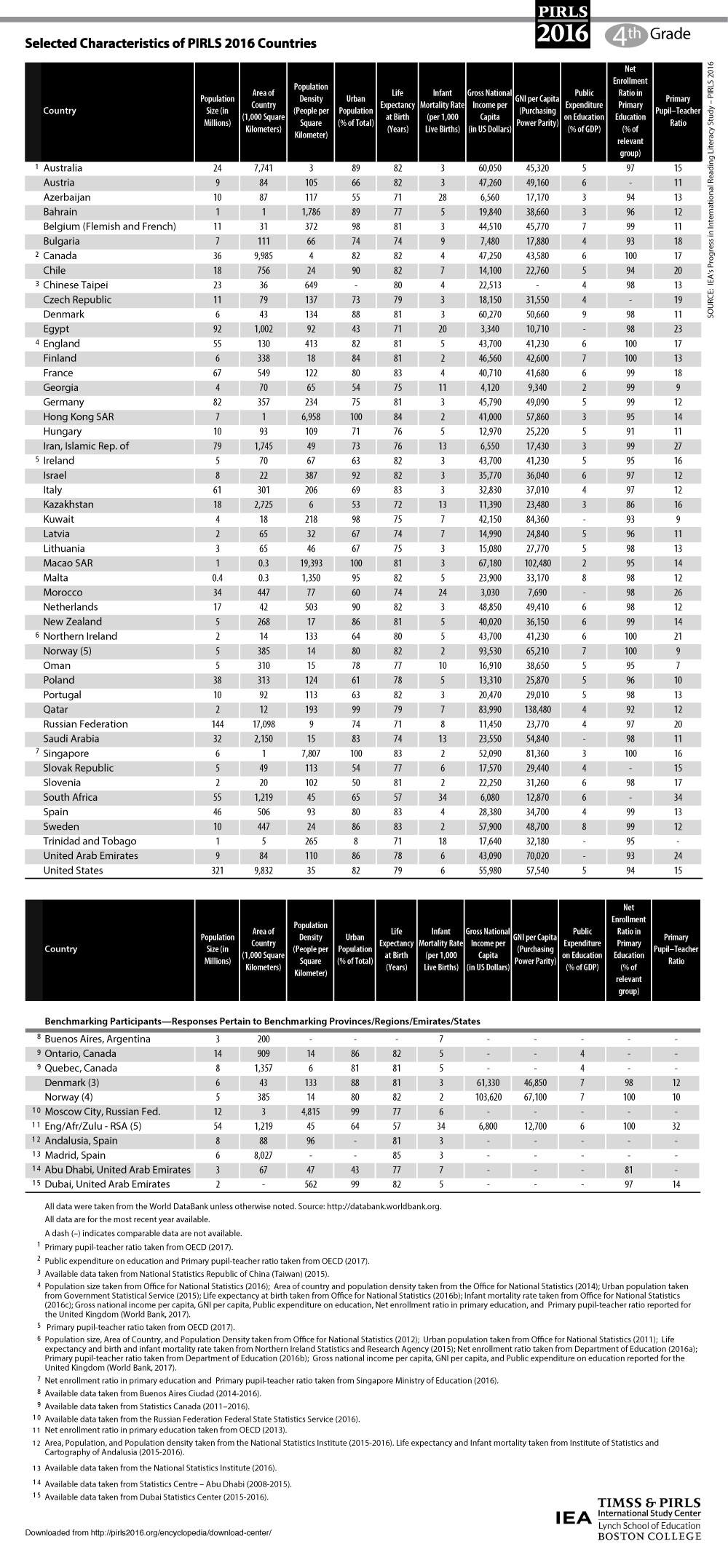Demographics of the PIRLS 2016 Countries
The PIRLS 2016 participants were from all around the world (on every continent except Antarctica), and represented a wide range of geographic and economic diversity. Because such factors as population size and economic resources can impact educational policies, the following table presents select information about the demographic and economic characteristics of the PIRLS 2016 countries, primarily taken from the World Bank’s World DataBank. The PIRLS 2016 countries vary widely in population size and geographic area, as well as in population density. The countries also vary considerably on indicators of health, such as life expectancy and infant mortality rate as well as on economic indicators. In some sense, these countries were more similar than different when it came to educational indicators showing education as a priority. For example, more than half the countries had at least 95 percent of their primary grade students enrolled in school.

